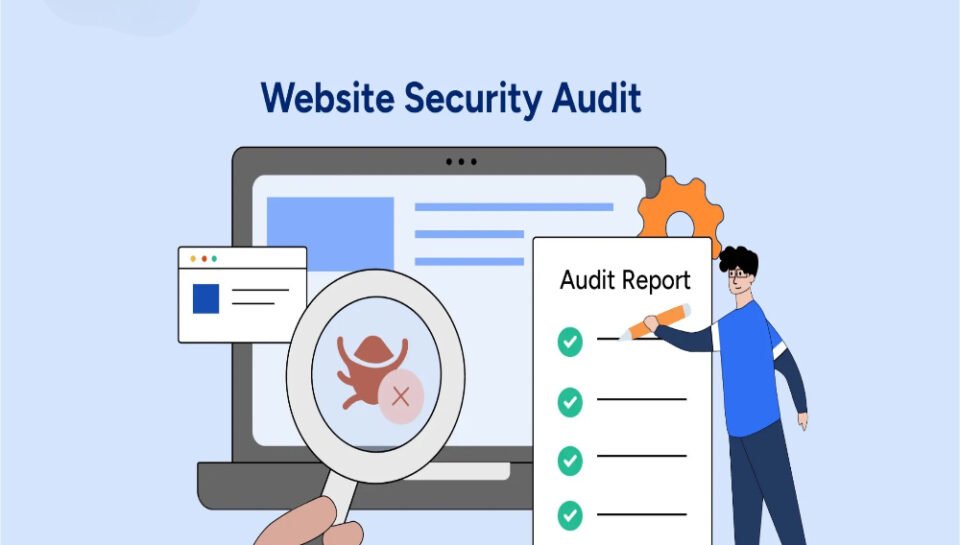
Describe How to Conduct a Security Audit of a Web Application
Introduction
In an age where data breaches and cyberattacks are increasingly common, securing web applications has become a top priority for organizations. A web application security audit is a systematic evaluation of the application’s code, architecture, and configurations to identify vulnerabilities that could be exploited by malicious actors. The goal is to ensure that the application complies with security standards and to fortify its defense against threats like SQL injection, cross-site scripting (XSS), and authentication flaws. Conducting a thorough security audit not only protects user data but also builds trust and ensures compliance with regulations such as GDPR, HIPAA, or PCI-DSS. This article outlines the comprehensive steps involved in performing a security audit of a web application, helping teams safeguard their digital assets effectively.
Establishing the Scope and Objectives
Before beginning the audit, it’s essential to define its scope. Determine which parts of the web application will be tested—this could include front-end interfaces, back-end services, APIs, databases, and third-party integrations. The objectives should be clearly laid out, such as identifying data leaks, evaluating authentication mechanisms, or ensuring encryption standards. Establishing the scope and goals helps allocate resources efficiently and sets expectations for the audit’s outcomes.
Understanding the Application Architecture
To audit a web application effectively, you need to understand its architecture. This includes its technology stack (languages, frameworks, databases), deployment environment (cloud, on-premise, hybrid), and user roles (admin, regular user, guest). Reviewing architectural documentation helps identify potential entry points and guides the auditing strategy. Knowing how data flows through the application also helps pinpoint weak spots in data validation and access controls.
Reviewing Source Code (Static Analysis)
Static code analysis involves reviewing the source code of the application without executing it. This process helps detect issues like hard-coded credentials, insecure function calls, improper input validation, and lack of error handling. Tools like SonarQube, Checkmarx, and Fortify are widely used for automated static analysis. Manual review, however, adds an extra layer of scrutiny, especially for business logic flaws that tools may miss. Clean, secure, and well-documented code is the first line of defense against attacks.
Conducting Vulnerability Scanning
Automated vulnerability scanners are essential tools in any security audit. They scan the application for known vulnerabilities such as SQL injection, XSS, insecure cookies, open ports, outdated libraries, and more. Tools like OWASP ZAP, Nessus, Burp Suite, and Nikto are popular choices. These tools map out the application, simulate various attacks, and generate detailed reports on found vulnerabilities. While they may produce false positives, they are highly effective for initial reconnaissance.
Performing Penetration Testing (Dynamic Analysis)
Unlike static analysis, dynamic analysis involves interacting with the application in real time to uncover vulnerabilities that arise during execution. Ethical hackers or security professionals simulate attacks such as brute force login attempts, CSRF (Cross-Site Request Forgery), and session hijacking. Penetration testing not only validates the presence of vulnerabilities but also demonstrates their potential impact. This real-world simulation is vital for understanding how attackers could exploit the application and which data or functions are at risk.
Testing Authentication and Authorization
Authentication ensures users are who they claim to be, while authorization controls what they are allowed to do. Weak authentication mechanisms—like insufficient password complexity, absence of multi-factor authentication (MFA), or poor session management—can easily be exploited. The audit should include testing login forms, password reset features, session tokens, and MFA configurations. Similarly, authorization checks must ensure that users cannot access or manipulate data or functions beyond their privileges. Role-based access controls should be rigorously validated.
Evaluating Input Validation and Output Encoding
Many security breaches begin with improperly sanitized user input. Auditors should test all input fields—search bars, form fields, upload boxes, query strings—for injection vulnerabilities. Common attacks include SQL injection, command injection, and script injection. Secure input validation techniques include whitelist filtering, escaping special characters, and setting strict data formats. Output encoding, on the other hand, ensures that even if malicious code is entered, it’s not executed when rendered by the browser. This is critical for preventing XSS attacks.
Analyzing Configuration and Deployment Settings
Misconfigured servers and insecure default settings can open the door to serious vulnerabilities. The audit should include a review of web server configurations (Apache, Nginx, IIS), database permissions, file access controls, SSL certificates, and HTTP headers. Ensure that debug modes are disabled, unnecessary services are turned off, and default credentials are changed. Tools like CIS-CAT and Lynis can automate much of this process and highlight configuration-related weaknesses.
Assessing Data Encryption and Storage
Sensitive data such as passwords, personal information, and payment details must be securely encrypted both in transit and at rest. The audit should verify that TLS (Transport Layer Security) is used for data transmission and that encryption protocols like AES-256 are used for storage. Passwords should be hashed with robust algorithms such as bcrypt or Argon2. Storing plain-text passwords or using outdated encryption methods represents a major security flaw.
Reviewing Error Handling and Logging Practices
Error messages can inadvertently reveal technical details that help attackers. The audit should check that error handling routines do not expose stack traces, server details, or database schema in public-facing messages. Logging, on the other hand, is vital for tracking suspicious behavior and debugging. However, logs must not contain sensitive information like full credit card numbers or passwords. Access to logs should also be restricted to authorized personnel only.
Auditing Third-Party Components and Dependencies
Most modern web applications rely on third-party libraries, plugins, and APIs. Each external component introduces potential vulnerabilities. The audit should catalog all dependencies and check for known issues using tools like Snyk, OWASP Dependency-Check, and npm audit. Ensuring that all third-party tools are updated and come from trusted sources reduces the attack surface and enhances overall security.
Ensuring Compliance with Security Standards
Depending on the industry, your web application may be subject to legal and regulatory frameworks such as GDPR, HIPAA, PCI-DSS, or ISO 27001. The audit should ensure that the application meets these requirements by securing personal data, implementing appropriate access controls, and maintaining audit trails. Non-compliance can result in fines, lawsuits, and reputational damage.
Creating a Detailed Audit Report
Once the audit is complete, a comprehensive report should be compiled. It must detail all identified vulnerabilities, their risk levels (critical, high, medium, low), potential impacts, and recommended remediation steps. Visual summaries, such as heatmaps or charts, help communicate findings to non-technical stakeholders. The report should also include a prioritized action plan for patching vulnerabilities and improving system security.
Implementing Fixes and Retesting
Identifying issues is only the first step; resolving them is equally crucial. Developers should implement the suggested fixes, whether it’s sanitizing inputs, updating software, or configuring firewalls. Once changes are made, the application should be retested to verify that vulnerabilities have been effectively mitigated. Continuous collaboration between developers, testers, and security professionals ensures a smooth remediation process.
Conclusion
A security audit is an essential practice for maintaining the integrity, confidentiality, and availability of a web application. It is not a one-time event but a continuous process that should be repeated regularly, especially after major updates or third-party integrations. By systematically evaluating and improving every layer—from source code to server configurations—organizations can stay ahead of threats, protect user data, and uphold trust in their digital platforms. In an era of escalating cyber risks, conducting thorough security audits is no longer optional—it’s a strategic necessity for sustainable digital operations.
Hashtags
#WebSecurityAudit #CyberSecurity #ApplicationSecurity #PenetrationTesting #StaticAnalysis #DynamicTesting #VulnerabilityAssessment #SecureCoding #OWASPTOP10 #SQLInjection #XSSProtection #AuthenticationTesting #DataEncryption #SecurityCompliance #WebAppSecurity #SecurityAuditChecklist #DevSecOps #MFA #HTTPSOnly #InfoSec #SecurityBestPractices #ErrorHandling #SecureConfiguration #CodeReview #SecurityTestingTools #TechSecurity





